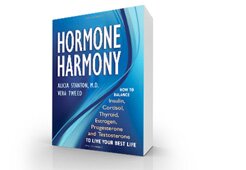By Jenny Block
Published December 02, 2010 | FoxNews.com
We know where it comes from and what it does. But sperm is an amazing thing, with more secrets than most of us would have guessed.
And we’re not just talking trivia here (although these fast facts might help you win a bar bet or two…) But upping your sperm IQ can help you to protect your health and your reproductive interests. And, who knows, you just might impress your partner with your sperm know-how.
Dr. David Shin, the Chief at the Center for Sexual Health & Fertility in the Department of Urology at the Hackensack University Medical Center in New Jersey, offers up 13 facts about the little swimmers that may surprise you.
- Sperm are produced in the testes and take 10 weeks to mature.
- Mature sperm can wait up to two weeks in a holding area called the epididymis before they make their debut. The epididymis is a storage reservoir for sperm. It is an organ that sits on top of the testicle.
- Sperm only contribute 5 percent of the total semen volume. The rest is comprised of fluids, which provide nutrients and protective medium for the sperm as it travels through the female reproductive tract.
- Healthy men make 70-150 million sperm a day.
- Sperm can live up to five days in a woman’s uterus, which explains why women can get pregnant over several days each month based on when she ovulates.
- The Y sperm, which are sperm that makes males, swim faster than X sperm, which are sperm that makes females. The Y chromosome is smaller and has less genetic material compared to the X chromosome, so the Y carrying sperm can swim faster because it has less weight to transport compared to the X carrying sperm.
- Human sperm measures 55 microns (micrometers or one millionth of a meter)
long. The average width of a human hair is 100 microns.
- Sperm is derived from the Greek word sperma meaning “seed.”
- Sperm can only swim forward and not backwards.
- Normal sperm have a head, mid-piece and a tail. Abnormal sperm can have two
heads or two tails.
- In the United States, sperm counts (which refer to the number of sperm present per milliliter of semen at the time of any given ejaculation) are the highest in New York. This is according to a study published in the journal “Fertility and Sterility,” although researchers have no idea why. They do know that men in New York have 50 percent higher sperm counts than men in Los Angeles.
- Extended time in hot tubs or saunas can decrease a man’s sperm count, as heat adversely affects sperm production.
- Lubricants, lotions and saliva all result in decreased sperm motility. In a study published in “Fertility and Sterility,” researchers noted that many lubricants tended to be ‘toxic’ to sperm, despite labeling. The researchers found it was the ingredients in the lubricants, such as glycerin, and that the slight acidity created poor conditions for sperm.
According to the Mayo Clinic’s website, giving sperm a leg up can be achieved through:
* Taking a multi-vitamin daily
* Eating plenty of fruits and vegetables
* Reducing stress
* Getting regular exercise
* Watching your weight
* Steering clear of toxins, tobacco use and illicit drugs
* Limiting alcohol
In other words, having a healthy body can help one to have healthy sperm. And, ladies, you want your man to have healthy sperm if you’re trying to get pregnant, which is a lot less precarious a feat than many think.
“Human reproduction is surprisingly inefficient and quite complex,” said Dr. Alicia Stanton, an OB-GYN based in Glastonbury, Conn.
Even fertile couples having unprotected sex only have a 25 percent chance of getting pregnant, according to Stanton.
Why you ask? Well, because sperm have a long journey to accomplish and the majority of the little guys simply are not up to it.
The average sperm travels about 1-4 millimeters per minute, which would make the 175mm trip to the egg in the fallopian tube take between 45 minutes to almost 3 hours.
“It can take up to three days before a sperm reaches the egg,” Shin added.
“Of all the sperm ejaculated, only 25-50 percent is actually moving forward well,” Stanton explained.
Add to that the fact that at the young age of 25 the quality of a man’s sperm begins to decline, it truly is a miracle that any of them ever reach the finish line.
Sperm are amazing. But they are only as good as the body who produces and takes care of them. So, you can use these tidbits to help you with your next game of Trivial Pursuit or maybe if you get the phone call from “Who Wants to Be a Millionaire.”
But, you’d be better served to use it to inspire you to find out more about all things sex. As the old saying goes, knowledge is power.
Jenny Block is a freelance writer based in Dallas. She is the author of “Open: Love, Sex, and Life in an Open Marriage.” Her work appears in “One Big Happy Family,” edited by Rebecca Walker and “It’s a Girl: Women Writers on Raising Daughters,” edited by Andrea Buchanan. Visit her website at www.jennyonthepage.com or check out her blog at www.jennyonthepage.blogspot.com.

